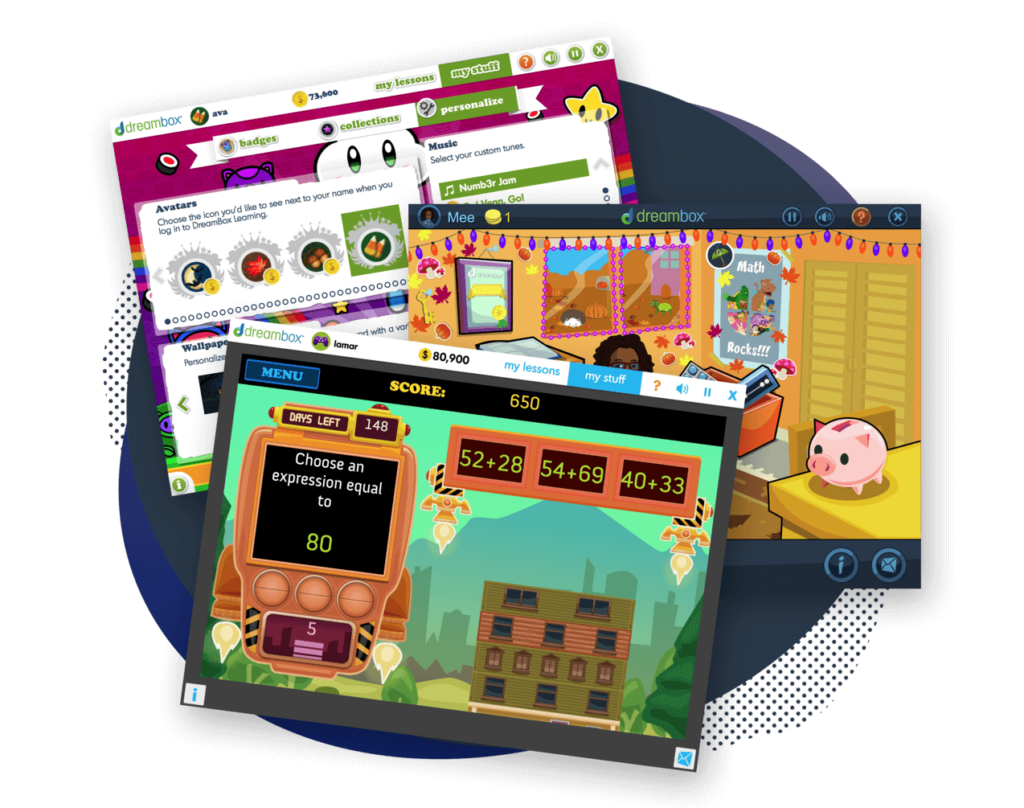What Math Does a 6th Grader Learn?

Author
Katie Wickliff
Published:
March 2025
Key takeaways
- • 6th grade math builds upon the foundational concepts learned in elementary school.
- • Parents can help their 6th grader find success in math in several ways, including encouraging a positive mindset
- • Homeschoolers can set their child up for math success by choosing quality resources and maintaining a consistent routine.
If you are the parent or caregiver of a rising 6th grader, you’ve likely watched them learn to count, solve basic arithmetic problems, understand measurement, identify geometric shapes, and much more. So now, you may find yourself asking, “What does a 6th grader learn in math?”
In this article, we’ll outline the math topics 6th graders generally learn and provide a few specific examples for each topic. It’s also important to note that while these key concepts are often determined by Common Core state standards, they can still vary by state or by school. We’ll also provide tips for parents to help their child meet these expectations and succeed in 6th grade math. Let’s get started!
What Do You Learn in 6th Grade Math?
During this important year, 6th grade math covers six key learning areas: ratios and proportional relationships, expressions and equations, statistics and probability, geometry, the number system, and mathematical practices.
Ratios and Proportional Relationships
In 6th grade math, students will learn about ratios and how to use them to compare two quantities. They’ll also understand the concept of a unit rate and its relationship to ratio, and use this reasoning to solve real world or mathematical problems involving pricing or speed. Students will demonstrate understanding by creating and interpreting tables, diagrams, and equations.
Expressions and Equations
Students will apply and expand their arithmetic skills to work with expressions that include variables. They’ll use tables or graphs to solve problems and show how changing one variable affects another. They’ll be able to identify parts of an expression and use the order of operations to solve. Sixth graders will also learn to understand equations and inequalities and create equivalent expressions.
Table of contents
Get help with 6th grade math with DreamBox!
Turn math into playtime with DreamBox Math
DREAMBOX MATH
Get started for FREE today!

Statistics and Probability
Sixth graders will learn to identify statistical questions, which are questions that expect a variety of answers. They’ll collect and analyze data to find answers, describing their results in terms of average, spread, and overall pattern. Students will also display data using graphs and summarize their findings by noting patterns and deviations, describing the number of observations, and explaining the data’s center and variability.
Geometry
In 6th grade geometry, students explore shapes and their properties, understanding and being able to calculate a shape’s area, perimeter, and volume. They learn about angles, lines, and symmetry, and how to classify shapes based on their characteristics. Students will also work with coordinate planes by drawing shapes on a grid when given the coordinates and determining the distance between each point.
The Number System
Students will extend their knowledge of multiplication and division to add, subtract, multiply, and divide decimals, fractions, and negative numbers. 6th graders will learn to represent problems using visual models, such as a number line or a decimal grid. Additionally, 6th graders explore the relationships between different types of numbers and understand how to use them in real-world scenarios.
Mathematical Practices
Throughout the year, 6th grade students will develop several important practices that will prepare them for success in math and beyond. These include:
- Understand problems and persevere until solved
- Reason with concrete and abstract thinking
- Share reasoning and respectfully critique other ideas
- Use math to solve real-world situations
- Choose appropriate tools to solve problems effectively
- Explain thinking clearly and use numbers and symbols correctly
- Recognize patterns and connections between numbers
Parent Tips for Sixth Grade Math Success
If the above concepts seem overwhelming, don’t worry! Parents don’t need to become overnight experts in 6th grade math. Several tips can help you set your student up for success.
- Encourage a Positive Mindset
Studies have shown that children with a positive attitude toward math develop greater confidence. Model this positive mindset when helping your 6th grader with math—even if you dislike the subject!
- Form a Partnership
Communication between home and school is key to supporting your 6th grader’s learning. Don’t hesitate to ask your child’s math teacher specific questions, because the more familiar you are with the curriculum, the more confident you’ll feel helping at home.
- Use Online Tools
Keep your 6th grader engaged and positive about math by mixing up home practice with online games or fun math apps. Also, if your child asks, “What math do you learn in 6th grade?” before the school year begins, online activities are a great way to provide an overview or extra enrichment.
- Set Small Goals
A large assignment or complex problem might make your 6th grader feel frustrated or overwhelmed. Help them break it down into smaller steps to build confidence and reduce stress.
FAQs about 6th Grade Math
While the hours vary depending on the school or curriculum, teachers and homeschoolers should teach math generally 45-60 minutes per day, 4-5 days per week. This allows time for introducing new concepts, practicing, reviewing, assessment, and enrichment or support where needed.
To start homeschooling a 6th grader, parents or caregivers must choose the curriculum, set a consistent (but flexible!) routine, focus on key concepts, use a variety of methods, and track progress.
6th grade math focuses on ratios and proportional relationships, expressions and equations, statistics and probability, geometry, the number system, and mathematical practices. Your child’s teacher can help clarify specific academic expectations.
6th graders should know foundational skills such as basic operations with whole numbers, decimals, and fractions, place value, factors and multiples, and basic geometry. They should also know how to use strategies to solve multi-step problems.
Homeschooling 6th grade can feel daunting at first, but with supportive resources and a consistent routine, parents can create a rich learning environment that fits their 6th grader’s unique needs.
Take at home math practice to the next level
Empowering parents and educators to make math practice more impactful. Plus, your kids will love it.


About the Author
Katie Wickliff
Katie holds a master’s degree in Education, has over 15 years of education experience as a primary classroom teacher, and is Orton-Gillingham certified tutor. Most importantly, Katie is the mother of two primary school students, ages 8 and 11. She is passionate about maths education and firmly believes that the right tools and support will help every student reach their full potential.